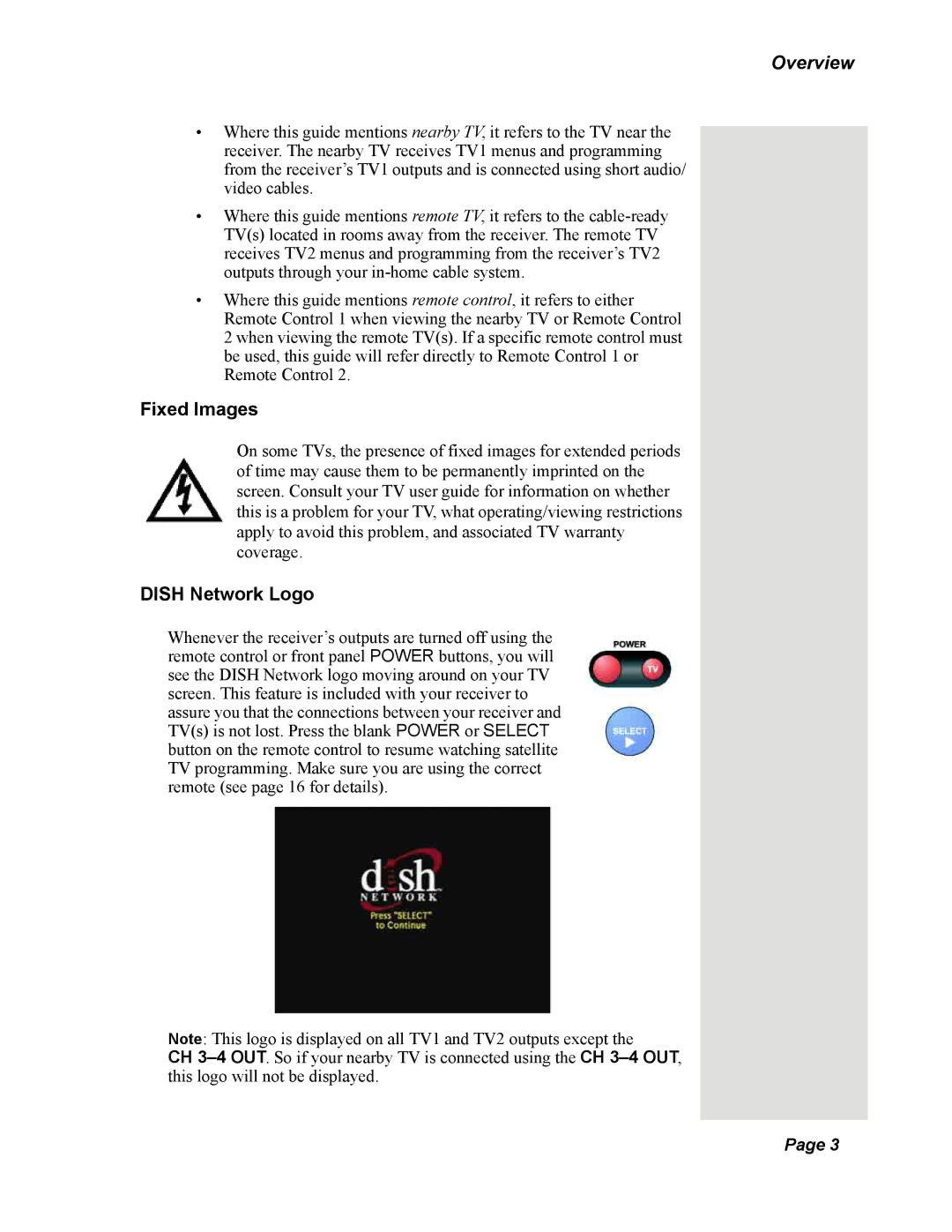
Overview
•Where this guide mentions nearby TV, it refers to the TV near the receiver. The nearby TV receives TV1 menus and programming from the receiver’s TV1 outputs and is connected using short audio/ video cables.
•Where this guide mentions remote TV, it refers to the
•Where this guide mentions remote control, it refers to either Remote Control 1 when viewing the nearby TV or Remote Control 2 when viewing the remote TV(s). If a specific remote control must be used, this guide will refer directly to Remote Control 1 or Remote Control 2.
Fixed Images
On some TVs, the presence of fixed images for extended periods of time may cause them to be permanently imprinted on the screen. Consult your TV user guide for information on whether this is a problem for your TV, what operating/viewing restrictions apply to avoid this problem, and associated TV warranty coverage.
DISH Network Logo
Whenever the receiver’s outputs are turned off using the remote control or front panel POWER buttons, you will see the DISH Network logo moving around on your TV screen. This feature is included with your receiver to assure you that the connections between your receiver and TV(s) is not lost. Press the blank POWER or SELECT button on the remote control to resume watching satellite TV programming. Make sure you are using the correct remote (see page 16 for details).
Note: This logo is displayed on all TV1 and TV2 outputs except the
CH
Page 3
